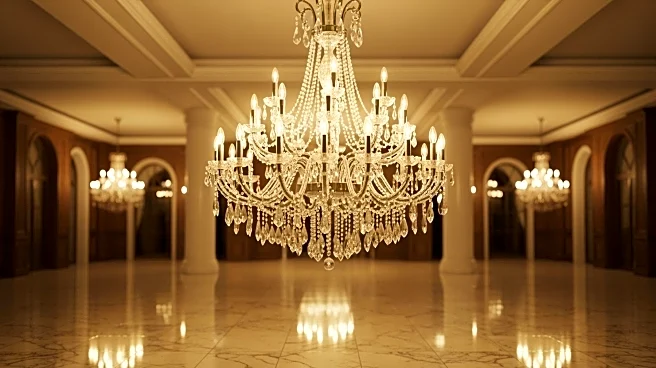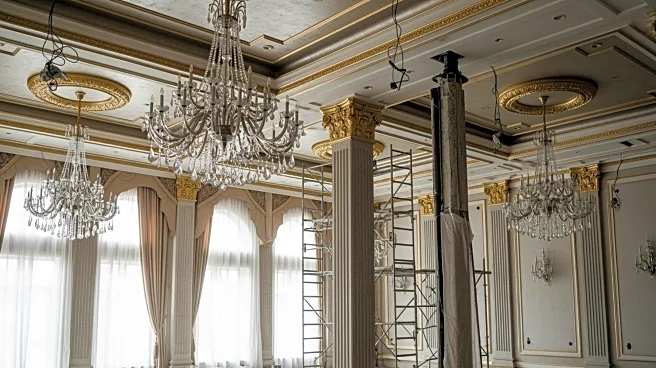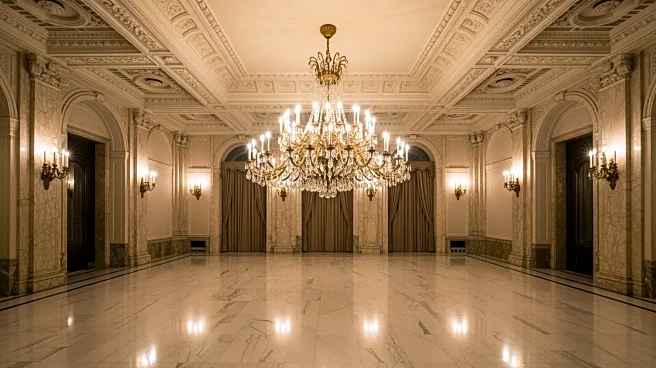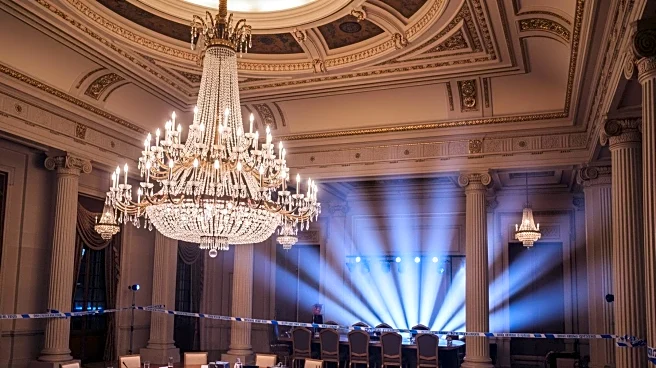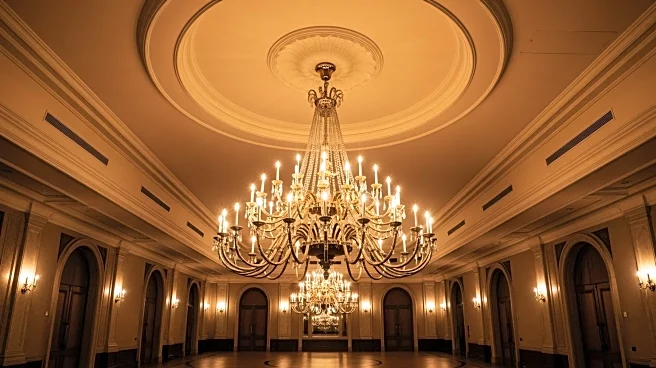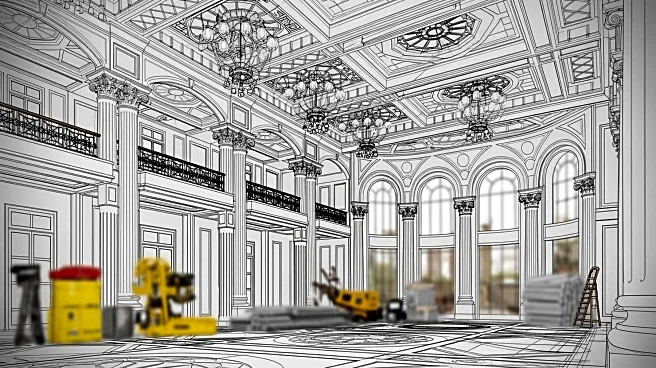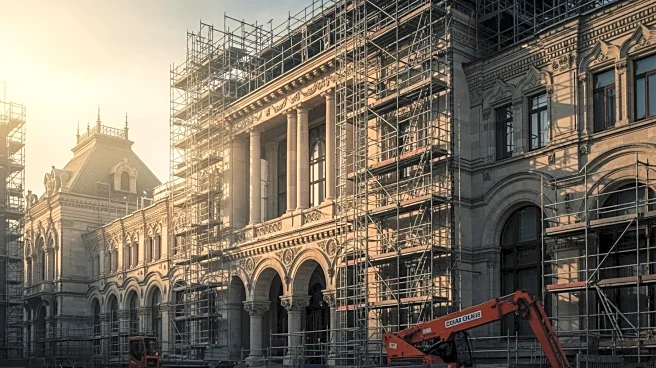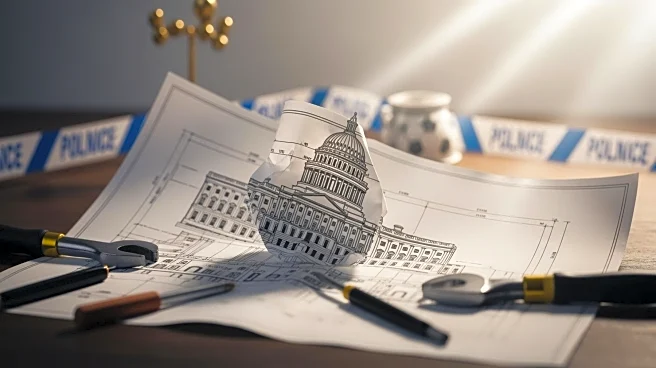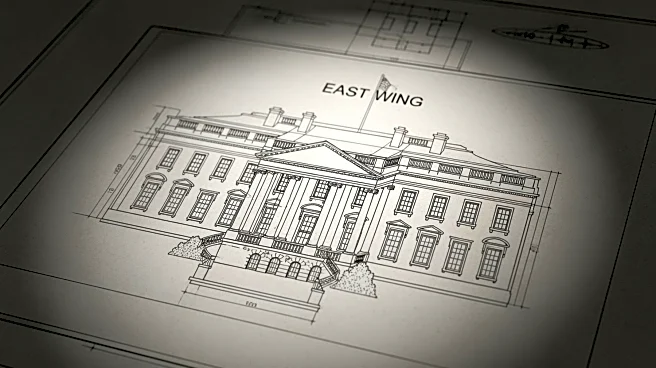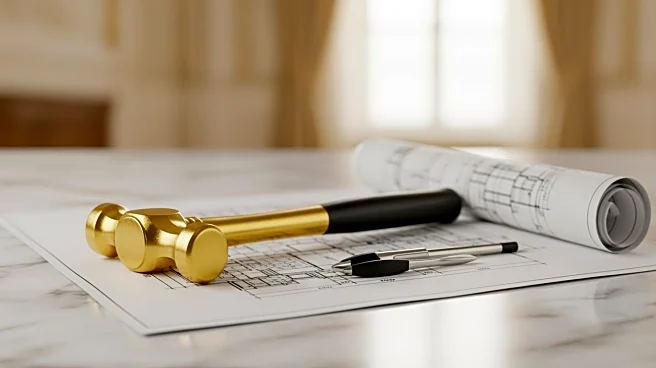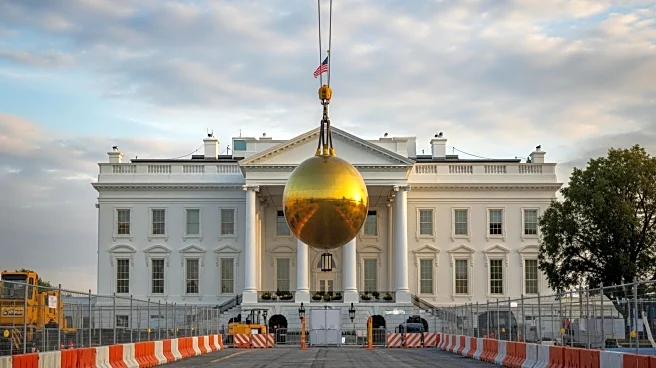What's Happening?
The White House, a historic American landmark, is undergoing significant changes under the current administration. President Trump has initiated the construction of a large, privately-funded ballroom,
which involves partial demolition of existing structures. This development is part of a series of renovations that have occurred since the White House was first inhabited by John Adams. The building has previously been burned, reconstructed, expanded, and renovated, reflecting its evolving role in American history.
Why It's Important?
The renovation of the White House under President Trump highlights the ongoing evolution of this iconic building, which serves as both a residence and a symbol of the U.S. presidency. The construction of a privately-funded ballroom may raise questions about the use of private funds for public spaces and the implications for transparency and accountability. This development could influence public perception of the administration's priorities and its approach to managing national heritage sites.
What's Next?
Further developments in the White House renovation may prompt discussions among historians, architects, and political analysts regarding the preservation of historical integrity versus modernization needs. Stakeholders, including government officials and preservation societies, may weigh in on the impact of such changes on the cultural and historical significance of the White House.
Beyond the Headlines
The renovation could spark broader debates about the balance between private funding and public interest in maintaining national landmarks. Ethical considerations may arise regarding the influence of private donors on public spaces and the potential for setting precedents in future administrations.
